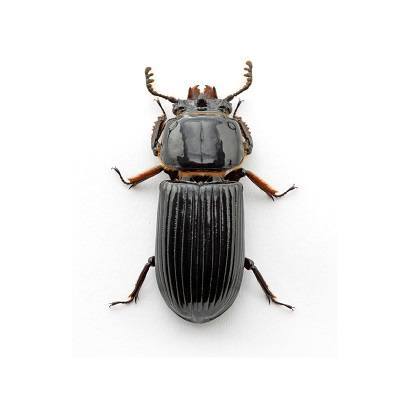Pest Learning Center - Occasional Invaders
There are some more common pests. Earwigs, Millipedes, Centipedes, Crickets, Silverfish, and Ground Beetles

Miscellaneous Insects
General Info:The ground beetle is the most common beetle in North America. It is found in many types of environments.
- Length: 1/8″ – 1/2″
- Region Found: Throughout the United States
- Residential Location: They can be found anywhere in or around the home, especially near moisture, heat sources, and plant matter.
- Random/Interesting Fact: There are more species of beetles than any other insect.
- Identification: The beetle is flattened with prominent mandibles (jaws). Many are black or brown, but colors also include blues, greens, and reds.
AKA ” Hundred-Leggers”
General Info: They can have anywhere from 15 to 177 pairs of legs. Most are nocturnal. They prey primarily on flies, spiders, and sometimes plant tissue. The venom in their bites is rarely dangerous to humans.
- Length: 1/8″ – 6″
- Region Found: Throughout the United States
- Residential Location: They are most commonly found in damp basements, mulch/flower-beds, crawlspaces, bathrooms or potted plants.
- Random/Interesting Fact: Centipedes always have an odd number of legs.
- Identification: They are yellowish to dark brown, sometimes with stripes. Centipedes are known for moving fast.
General Info: Millipedes are comparatively slower than centipedes. They have two pairs of legs per body segment, and feed on decaying plant matter.
- Length: 1/16″ – 4 1/2″
- Region Found: Throughout the United States
- Residential Location: They are typically in areas of high moisture and decaying vegetation, such as under trash, in piles of grass clippings, flower-bed mulches, and piles of leaves
- Random/Interesting Fact: They don’t really have 1000 legs. The max is around 750.
- Identification: They are either black or brown, with red/orange legs. They are worm-like in structure.
General Info: Earwigs have long cerci “clippers” on their backsides. They like to hide during the day and feed on leaves, flowers, fruits, mold, and insects at night.
- Length: 1/4″ – 2″
- Region Found: Throughout the United States
- Residential Location: They perfer dark damp areas, such as under pavers, in bathrooms, and under kitchen sinks. They live together outdoors in large numbers. Earwigs can be found under piles of lawn debris, mulch or in tree holes. They gain entry to a structure through exterior cracks.
- Random/Interesting Fact: Contrary to folklore, earwigs do not crawl into ears.
- Identification: They are dark brown, with 6 long, narrow legs.

